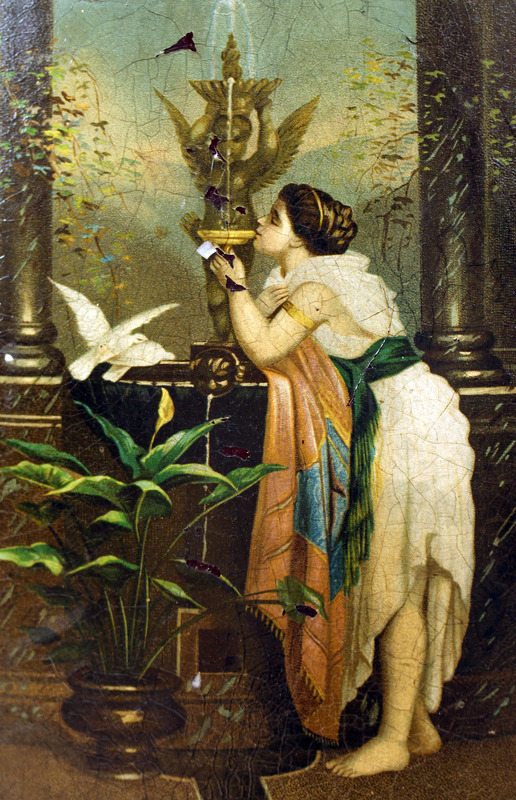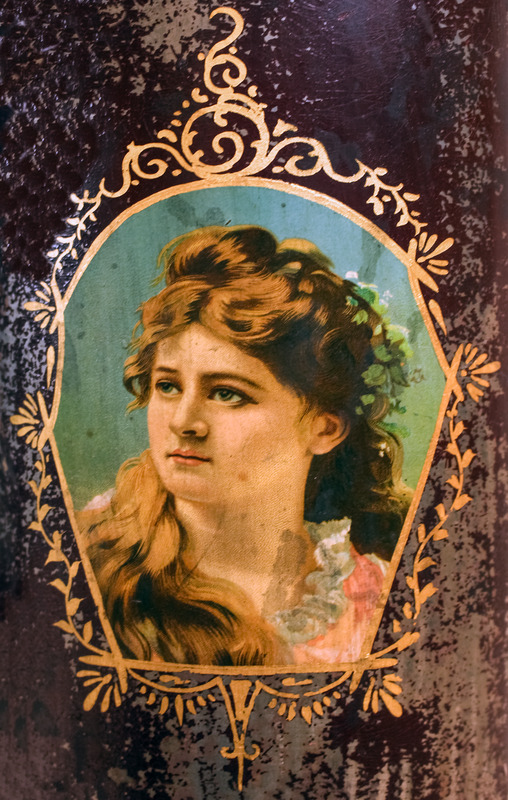The Nevius Gasometer, 1883
Item
Title
The Nevius Gasometer, 1883
Date
1883
Description
“The Nevius Gasometer” patented by H.D. Justi and Son
Nitrous oxide (or “laughing gas”) was first synthesized by Joseph Priestley in 1772, and liquefied nitrous oxide was first manufactured in the U.S. in 1871. This unit holds 12 gallons of gas to anesthetize a patient during a dental procedure. The quantity typically needed was 3-5 gallons per patient.
Who discovered anesthesia?
A subject of controversy between physicians and dentists for over 170 years, three different individuals have claimed to be “the first”:
-March 30, 1842—Dr. Crawford W. Long, a physician from Jefferson, Georgia, demonstrated the use of sulfuric ether. However, his work was not published until years later, and the exact date of his demonstration is questioned.
-December 11, 1844—Dr. Horace Wells, a dentist from Hartford, Connecticut, conducted the first public demonstration of using nitrous oxide as an anesthetic for a molar extraction. Unfortunately, the demonstration was largely considered a failure as the patient was moaning during the procedure.
-October 16, 1846—Dr. William T.G. Morton, a dentist from Boston, Massachusetts (and former apprentice to Dr. Horace Wells), conducted a successful demonstration of the use of ether as an anesthetic for surgery.
So, who won?
Both the American Dental Association in 1864, and the American Medical Association in 1879, credited Dr. Horace Wells as the discoverer of anesthesia.
Nitrous oxide (or “laughing gas”) was first synthesized by Joseph Priestley in 1772, and liquefied nitrous oxide was first manufactured in the U.S. in 1871. This unit holds 12 gallons of gas to anesthetize a patient during a dental procedure. The quantity typically needed was 3-5 gallons per patient.
Who discovered anesthesia?
A subject of controversy between physicians and dentists for over 170 years, three different individuals have claimed to be “the first”:
-March 30, 1842—Dr. Crawford W. Long, a physician from Jefferson, Georgia, demonstrated the use of sulfuric ether. However, his work was not published until years later, and the exact date of his demonstration is questioned.
-December 11, 1844—Dr. Horace Wells, a dentist from Hartford, Connecticut, conducted the first public demonstration of using nitrous oxide as an anesthetic for a molar extraction. Unfortunately, the demonstration was largely considered a failure as the patient was moaning during the procedure.
-October 16, 1846—Dr. William T.G. Morton, a dentist from Boston, Massachusetts (and former apprentice to Dr. Horace Wells), conducted a successful demonstration of the use of ether as an anesthetic for surgery.
So, who won?
Both the American Dental Association in 1864, and the American Medical Association in 1879, credited Dr. Horace Wells as the discoverer of anesthesia.
Rights
Courtesy of UNMC College of Dentistry, through the support of the Dental Museum Fund and curated by Dr. Stanton D. Harn



